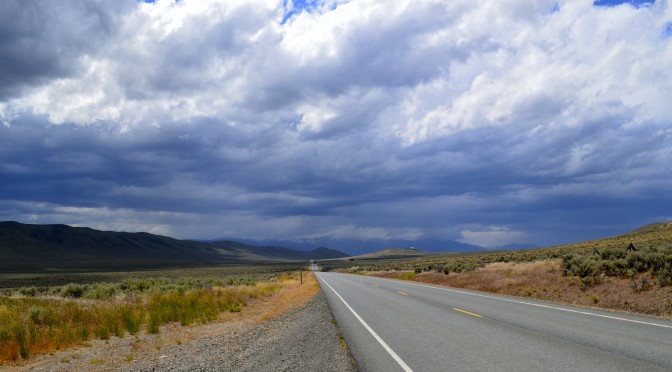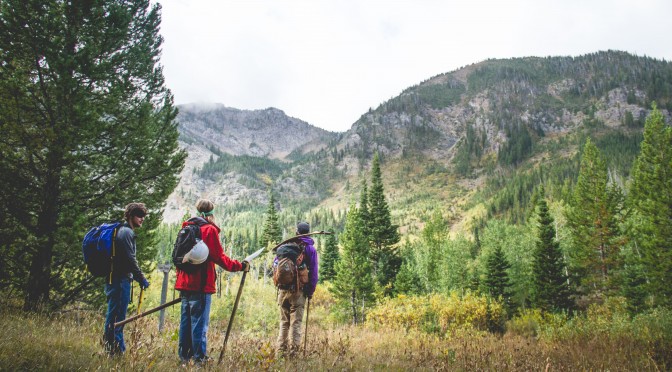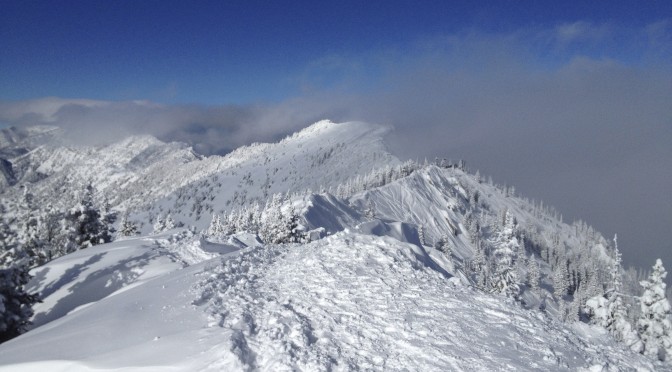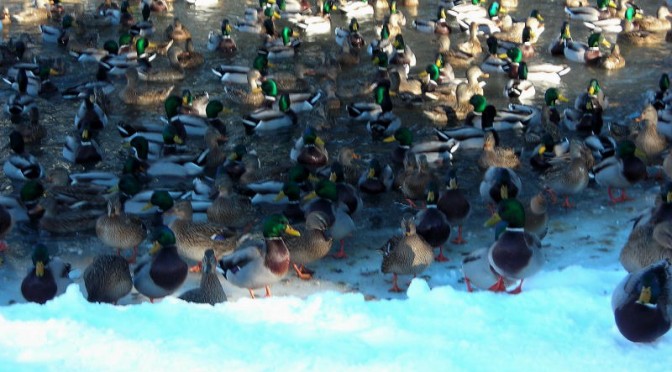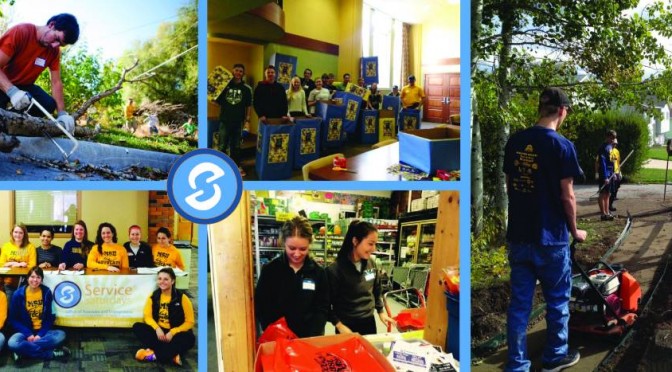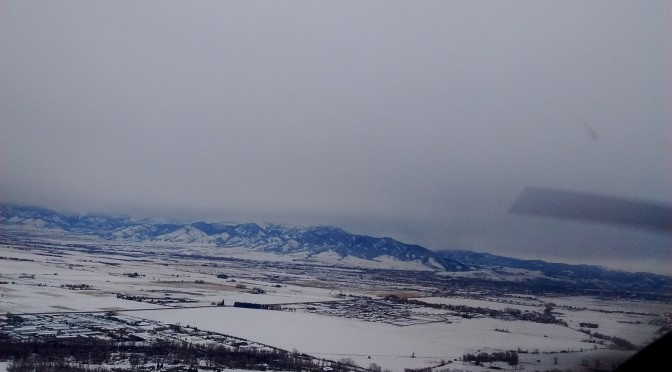Getting a bird’s-eye view of Bozeman.
by Lilly Brogger
Heart racing, I took control of the plane. My left hand trembled on the stick as I pushed the throttle to full power with my right, causing the plane to lurch across the runway. As we gained speed, I eased the stick back, lifting the nose off the ground—we were airborne.
Though I felt like part of some top-secret mission, I was actually doing an introductory flight with Summit Aviation. As a college student, I tore a coupon out of the MSU Pocket Guide and was able to give flying a try for less than the cost of Big Sky ski pass. Summit Aviation typically does these introductory flights for people interested in beginning regular flight lessons. The plane was a little Diamond DA20, designed for training. Josh, my flight instructor, had his own stick to keep me lined out.

My side of the plane, with the joystick-like stick at lower right.
Once in the air, Josh used his own controls to straighten us out. As we reached the desired elevation, he coached me through the process of leveling off the nose. I tried to keep my movements smooth, but kept going too far right or left while I moved the stick forward and back to keep us level. Josh’s patient, encouraging voice spoke to me through the headset and once I got us lined out he announced, “You’re flying a plane!” My mind went blank—I was in disbelief. “Ahhhh, no I’m not!” I objected, and he got a huge kick out of that.
My hand was plastered to the stick and Josh took the opportunity to relieve me of the controls and let me take in the sights for a while. When I was flying, Josh had said to point toward the “M.” While trying to focus, I didn’t actually take in its grandeur from our bird’s-eye view, but I did see where Bozeman starts to the north and east.
While I was looking out the window, Josh explained that being relaxed was the most important part of flying. Taking his own hand off the stick, he said, “See, at this point, the plane pretty much flies itself.” I wondered if that was a subtle reference to my own death-grip on the stick during take-off.
I looked out the window and was taken aback by how different the valley looks from above. We were now over town. When driving through Bozeman, it feels like a huge, metropolitan cluster, but from above, it’s tiny—just a speck within a vast and open valley. Josh made straight for MSU, made a hard turn above Bobcat Stadium, and circled above campus.

The view of Bobcat Stadium from above.
We then headed south by southwest, toward Gallatin Gateway. Josh pointed out landmarks so I could get my bearings: the Oracle campus below us to the south, Four Corners out ahead. Finally, the serpentine shape of the Gallatin River emerged, trees standing out against the recent snow.
Taking in the serene winterscape below, I thought about how calm and helpful Josh was—it made the experience that much more enjoyable. I’m not much for small talk, and he had to coax conversation out of me, asking about school and relating his own experiences. I got distracted with the view below, and after a long period of silence, he asked, “Are you okay?” I was perfectly fine but really did appreciate that he wanted me to have a good time up there.
After Gateway, we turned north, heading back toward the airport. I looked west, able to see some of the Tobacco Roots through clouds, close to where I grew up. The rest of the flight was incredibly relaxing and the landscape was exquisite—as a senior in college currently pulling out all the stops to pass my classes, keep my life together, and graduate, saying I’ve been overwhelmed would be an understatement. It’s easy to let stress build up but while looking at the mountains at their level, all thoughts about school and life left my mind. Looking back, it was the best stress-relieving measure I’ve taken in a long time.
The thin blanket of snow below made each hill, body of water, building, and landmark stand out, stark against the perfect white. My roommate had told me, “You will get to see the valley from God’s eyes and that is very special.” It was special indeed and gave me a new perspective on what this place really looks like.

A Diamond DA20. Image courtesy of Summit Aviation.
As a true-to-the-core westerner, when I see a new place, I often wonder what it once looked like. Nothing is as euphoric as cresting a hill on horseback and looking down on a completely wild place. Time obliterates and I think, “I feel like Charlie Russell right now.” It could be 1890 for all I know. This was the same feeling I had looking at the valley from above. The Gallatin Valley hasn’t been developed for very long compared to the rest of the world. Trying to erase the houses from my vision and just see the wild, I realized how expansive it would have seemed, standing atop any of the mountain ranges we are surrounded by.
Still, as a fifth-generation native of the valley, I have also become increasingly cynical about change. From the air, subdivisions surrounded by hayfields were scars. Manicured lawns and new fences covered wounds left in the ground. The town itself seems to belong, to fit in with the surrounding environment, but its fringes are awkwardly attached. From my vantage point, I realized that Bozeman hasn’t swallowed the valley whole quite yet, but it’s certainly working on it.
We came in toward the airport, completing our circle of the valley. The flight flew by (ha) but we had been in the air for quite a while. Josh radioed in to check for other planes on the runway and once we got the go-ahead, he told me to put my hand back on the stick, saying, “This is a little trickier than takeoff but I’ll guide you along.” Knowing he’d be helping gave me a lot more confidence.
This time, I tried to emulate the relaxed, smooth movements Josh had shown me, and with a little help, I lowered the plane onto the runway. Josh took care of the throttle and helped me keep the plane straight.
On the ground again, I realized that I—the nervous, inexperienced student—had just completed a takeoff and landing, the two most technical parts. Josh cruised around at altitude. Realizing I was capable of such things was empowering.
As the plane came to stop, I was excited. The entire experience was phenomenal. While I have no plans to become a pilot—I like keeping two feet on the ground—I would encourage anyone wanting to see the valley from this perspective, and give flying a try, to check out Summit Aviation.
My conversation with Josh also made me think about the other career options young people have. I chose college and continue to be passionate about my English writing studies, but have friends who are struggling to find a curriculum they enjoy. College is too expensive to be unhappy with your studies, and contrary to popular belief, a college degree isn’t necessary for success. I decided to stick to writing, but if you’re a student looking for more options and like a little adventure, go take an introductory flight. You just might find a new career path.
Josh was a great instructor, and despite my fears, deep down I knew I was in safe hands. My new perspective left me refreshed and invigorated, and our little jaunt around the valley reminded me how important it is to seek out new experiences. A new perspectives doesn’t just teach, they create memories that stick with us forever.

